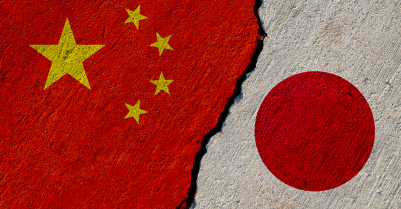-
View article
 #Economy
#EconomyChina: confidence, price war and credibility are the watchwords in this early part of the year
2024/03/26
- 2011/02/24
- 3 min
- 0
2010 results: Excellent business momentum dedicated to customers and financing of the economy. No capital increase in the framework of Basel III
CREDIT AGRICOLE GROUP
The Crédit Agricole Group as a whole generated net income, Group share of 3.6 billion euros, a rise of 31.5% on the previous year. This performance is particularly noteworthy in that it was tempered by substantial impacts from non-recurring management decisions and measures designed to lay a sound base to prepare for the future, including the accounting reclassification of the equity investment in Intesa Sanpaolo, goodwill impairment of the Greek subsidiary Emporiki, and operational mergers of several subsidiaries in the business lines.
In 2010, the Group's business reflected robust business momentum across the retail banking networks and related business lines (insurance, asset management and specialised financial services). This year's results confirm the relevance of Crédit Agricole Group's business model, which was reconfirmed when the Group Project was unveiled. The model is based on the predominance of retail banking and associated specialised businesses. As such, the retail banking networks generate over 60% of net banking income of the business lines and the French branch networks alone over 50%.
This revenue growth, coupled with controlled recurring expenses and a substantial decline in the cost of risk, is responsible for the 58% surge in operating income to nearly 8.2 billion euros, a level that is representative of the Group's ongoing business.
With 457.4 billion euros of loans outstanding at 31 December 2010, the Group is perpetuating its position as the leader in financing the French economy, year after year. It is living up to its commitment to support the projects of its 54 million clients, including individuals, small businesses or corporate customers.
CREDIT AGRICOLE S.A.
Crédit Agricole S.A.'s Board of Directors, chaired by Jean-Marie Sander, met on 23 February 2011 to review results and approve the accounts for the year ended 31 December 2010. It also ratified the application of new prudential treatments for capital funds that had previously been submitted to the French Prudential Supervision Authority (ACP).
Crédit Agricole S.A.’s Chairman, Jean-Marie Sander, and its Chief Executive Officer, Jean-Paul Chifflet welcomed the fact that these prudential treatments confirm the intrinsic solidity of the Group's financial structure.
In his presentation of Crédit Agricole S.A.'s results, Mr Chifflet noted that 2010 was a year of uncertainty over the economic recovery, the solvency of some European governments and ongoing reform of prudential regulations for banks.
Crédit Agricole S.A.'s 2010 results reflect solid business momentum, particularly in French retail banking, as well as continued rationalisation of subsidiaries in business lines serving the branch networks and a downtrend in the cost of risk.
Net banking income rose by 7.8%, on a like-for-like-basis and at constant exchange rates, under the impetus of strong business growth across all business lines, including international retail banking and corporate and investment banking. This performance was achieved while continuing to contain costs. Expenses moved up 3.9%, taking into account the cost of major projects that will pay off in the future, such as the Evergreen project, the NICE project and the Chartres data centre. It is also the fruit of the restructuring of the business lines, with the Sofinco/Finaref and Crédit Agricole Leasing/Eurofactor mergers, the successful creation of Amundi, and the build-up of Crédit Agricole Assurances.
Overall, gross operating income rose by 16.1% on a like-for-like basis. This reflects the Group's solid organic growth, which was confirmed by the impressive 16.4% increase in the Regional Banks' equity accounted results.
The significant reduction in the cost of risk (down 19.4%) is another highlight of 2010. The cost of risk declined steadily, quarter after quarter. All business lines contributed, with a pronounced fall for Corporate and investment banking and a more modest decline for the branch networks (LCL, international retail banking) and consumer finance.
Moreover, 2010 results incorporate the impacts of several very significant but non-recurring items, including the effects of the disposal of part of the investment in Intesa Sanpaolo (-171 million euros) and the deconsolidation of the remainder of the stake after renouncing to the significant influence (-1,24 billion euros), a 418 million euro goodwill impairment charge for Emporiki, and the recognition of the "exit tax" in life insurance, with a net positive effect above 400 million euros.
New prudential treatment applied to capital funds
The Board of Directors also ratified new methods to calculate prudential ratios in accordance with the regulation.
- As cooperative and mutual banks are now subject to new methods of treating intra-Group equity investments held through listed and unlisted securities, Crédit Agricole S.A.'s stakes in the Regional Banks are no longer deducted 50% from Tier 1 and 50% from Tier 2, but are added to total risk-weighted assets after applying a weighting. These new methods came into effect as of 31 December 2010 and the prudential ratios at that date are calculated on this basis. The impact of this change of method is approximately -120 basis points for Core Tier 1, +40 basis points for Tier 1 and +200 basis points for the overall ratio.
- In keeping with the new Basel III requirements, certain instruments, such as the shareholders' advance and deeply subordinated notes (T3CJ), will be no longer included in the calculation of Tier 1 common equity (the new designation of Core Tier 1). Among the solutions considered to replace these, the French Prudential Supervision Authority (ACP) approved the principle of an intra-Group transaction called “switch guarantees” which are designed to transfer to the Regional Bank the risk of a decline in the equity-accounted value of Crédit Agricole S.A.'s investments in the Regional Banks through a guarantee provided by each of the Regional Banks. As a result, the capital requirements at Crédit Agricole S.A. for holding these securities will be transferred to the guarantors (the Regional Banks), together with the risk, via a switch guarantee. A similar mechanism will be set up for the Insurance switch, which will guarantee all or part of the risk of a decline in the equity-accounted value of Crédit Agricole Assurances.
This solution, which is not dilutive and does not alter the Crédit Agricole Group's solvency position but uses the Group's internal flexibility, will be implemented by the end of 2011 and will enable Crédit Agricole S.A. to meet Basel III requirements without requiring a capital increase.
At the Annual General Meeting on 18 May 2011, the Board of Directors will recommend that the shareholders approve a dividend of 0.45 euro per share. Two options for dividend payment will be offered:
- full payment in cash; or
- full payment in shares.
During the Board meeting, Crédit Agricole S.A.'s majority shareholder, S.A.S. Rue la Boétie, indicated that it was strongly in favour of the option to take the dividend payment in new shares and that it would do so providing that this is approved at its next Annual General Meeting...




